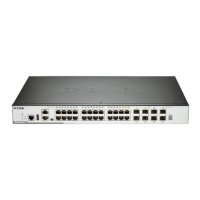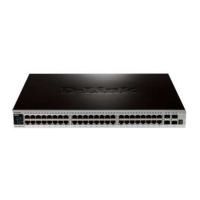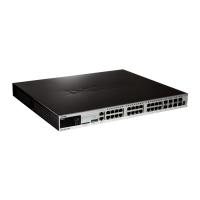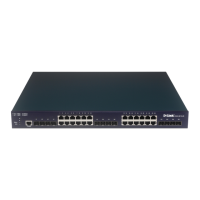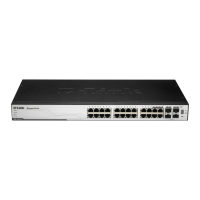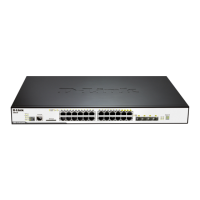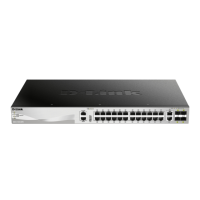DGS-3630 Series Layer 3 Stackable Managed Switch Web UI Reference Guide
103
The SIM group is a group of Switches that are managed as a single entity. The Switch may take on three different
roles:
1. Commander Switch (CS) - This is a Switch that has been manually configured as the controlling device for a
group, and takes on the following characteristics:
It has an IP Address.
It is not a CS or member Switch of another SIM group.
It is connected to the member Switches through its management VLAN.
2. Member Switch (MS) - This is a Switch that has joined a SIM group and is accessible from the CS, and it takes
on the following characteristics:
It is not a CS or MS of another SIM group.
It is connected to the CS through the CS management VLAN.
3. Candidate Switch (CaS) - This is a Switch that is ready to join a SIM group but is not yet a member of the SIM
group. The Candidate Switch may join the SIM group of the Switch by manually configuring it to be a MS of a
SIM group. A Switch configured as a CaS is not a member of a SIM group and will take on the following
characteristics:
It is not a CS or MS of another Single IP group.
It is connected to the CS through the CS management VLAN
The following rules also apply to the above roles:
• Each device begins in a CaS state.
• A CS must change its role to CaS and then to MS, to become a MS of a SIM group. Thus, the CS cannot
directly be converted to a MS.
• The user can manually configure a CS to become a CaS.
• A MS can become a CaS by:
Being configured as a CaS through the CS.
If report packets from the CS to the MS time out.
• The user can manually configure a CaS to become a CS
• The CaS can be configured through the CS to become a MS.
After configuring one Switch to operate as the CS of a SIM group, additional Switches may join the group by manually
configuring the Switch to be a MS. The CS will then serve as the in-band entry point for access to the MS. The CS’s IP
address will become the path to all MSs in the group and the CS’s administrator password, and/or authentication will
control access to all MSs in the SIM group.
With SIM enabled, the applications in the CS will redirect the packets instead of executing packets. The applications
will decode the packet from the administrator, modify some data, and then send it to the MS. After execution, the CS
may receive a response packet from the MS, which it will encode and send it back to the administrator.
When a CaS becomes a MS, it automatically becomes a member of the first SNMP community (includes read/write
and read only) to which the CS belongs. However, if a MS has its own IP address, it can belong to SNMP
communities to which other switches in the group, including the CS, do not belong.
Upgrade to v1.61
To better improve SIM management, the Switches have been upgraded to SIM version 1.61. Many improvements
have been made, including the Commander Switch (CS) now having the capability to automatically rediscover
member switches that have left the SIM group, either through a reboot or web malfunction. This is accomplished
through the use of Discover packets and Maintenance packets that previously configured SIM members will send and
receive after a reboot. Once a MS has had its MAC address and password saved to the CS’s database, if a reboot
occurs in the MS, the CS will keep this MS information in its database and when a MS has been rediscovered, it will
add the MS back into the SIM tree automatically. No configuration will be necessary to rediscover these switches.
There are some instances where pre-saved MS Switches cannot be rediscovered. For example, if the Switch is still
powered down, if it has become the member of another group, or if it has been configured to be a Commander Switch,
the rediscovery process cannot occur.
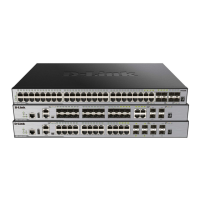
